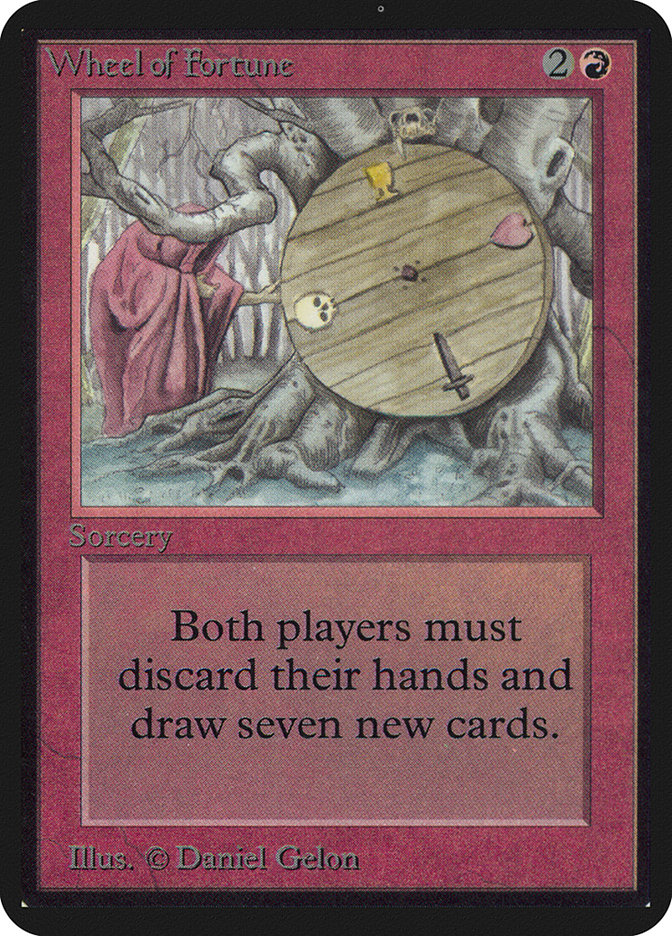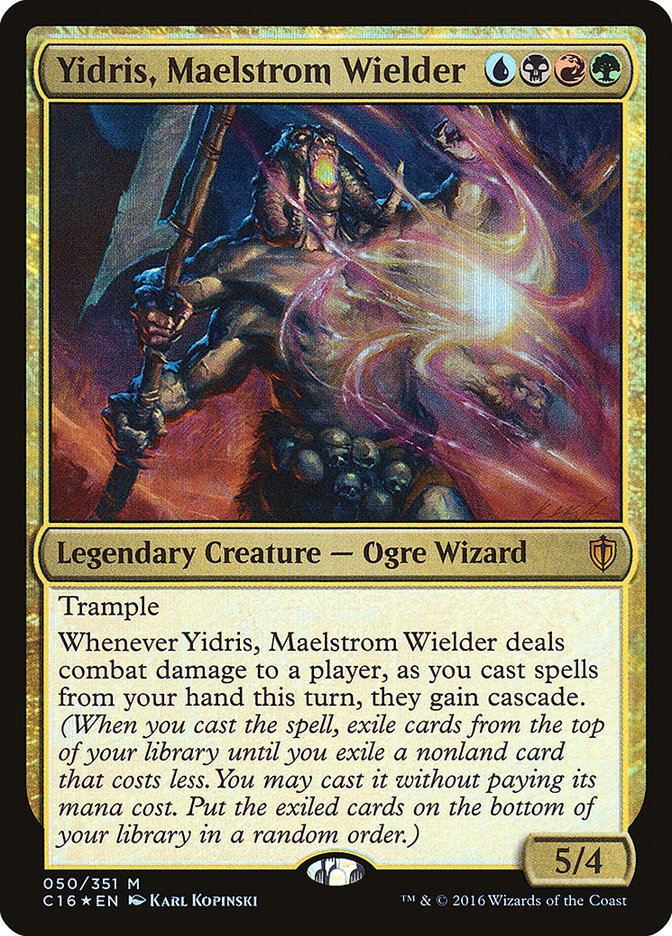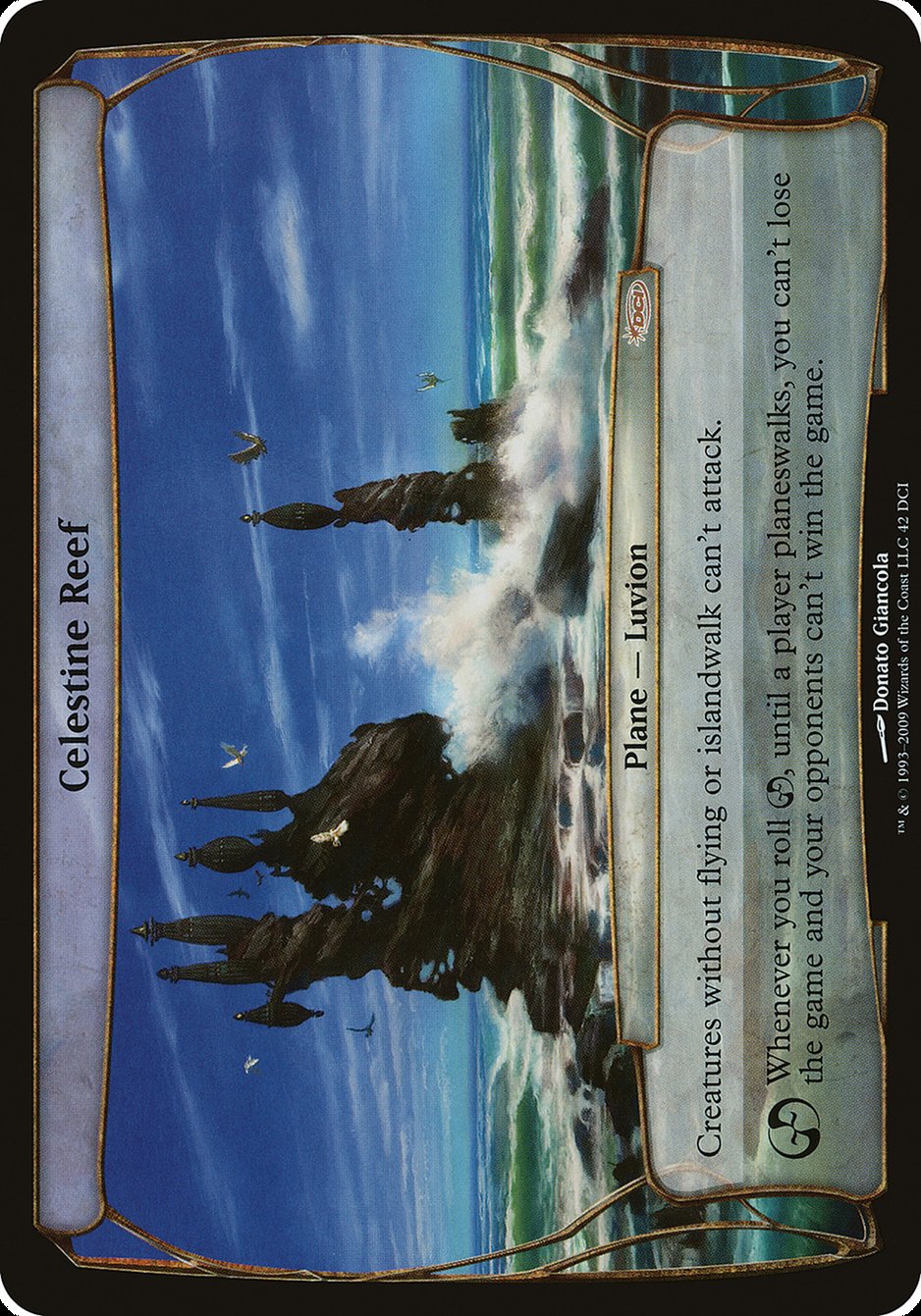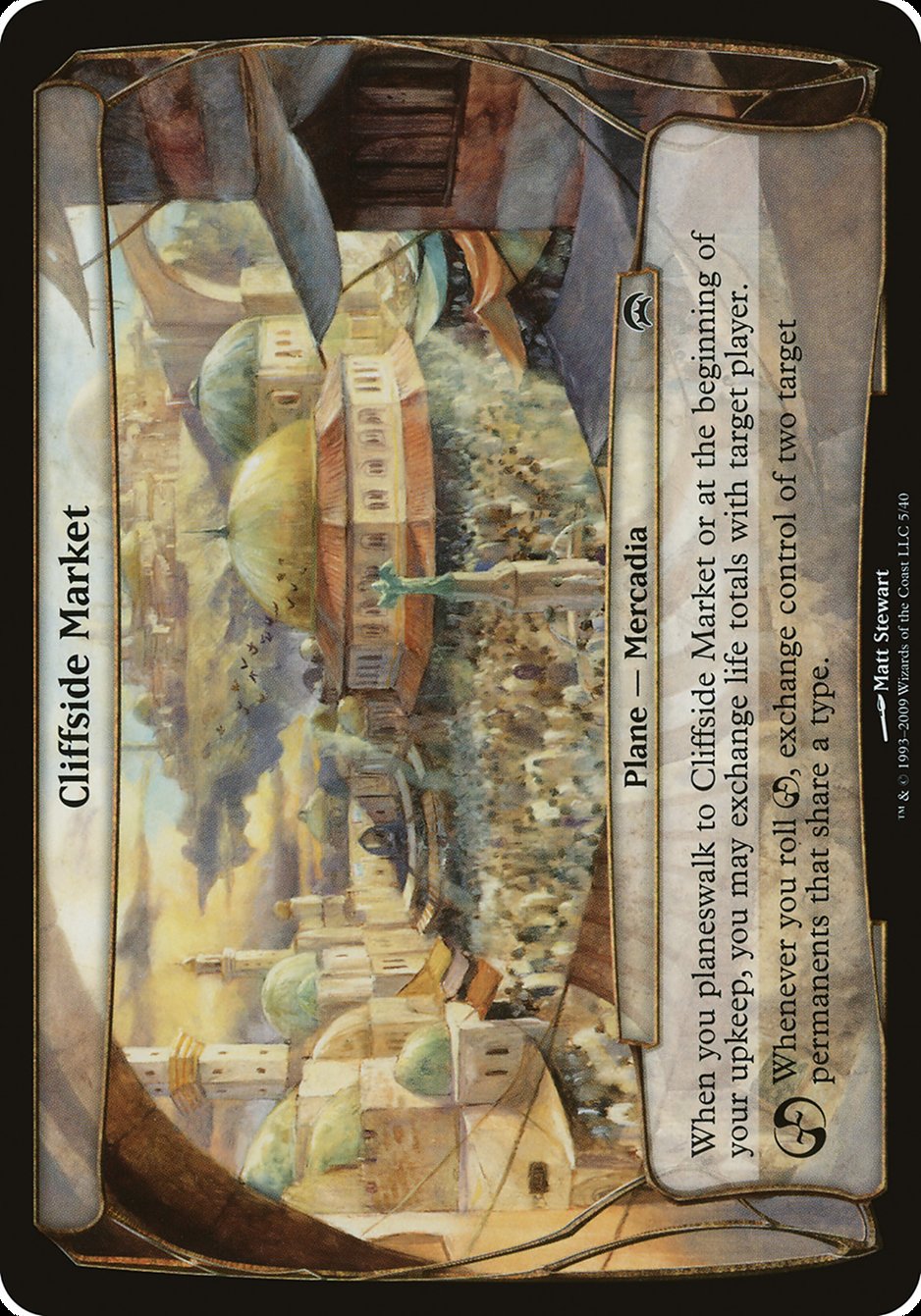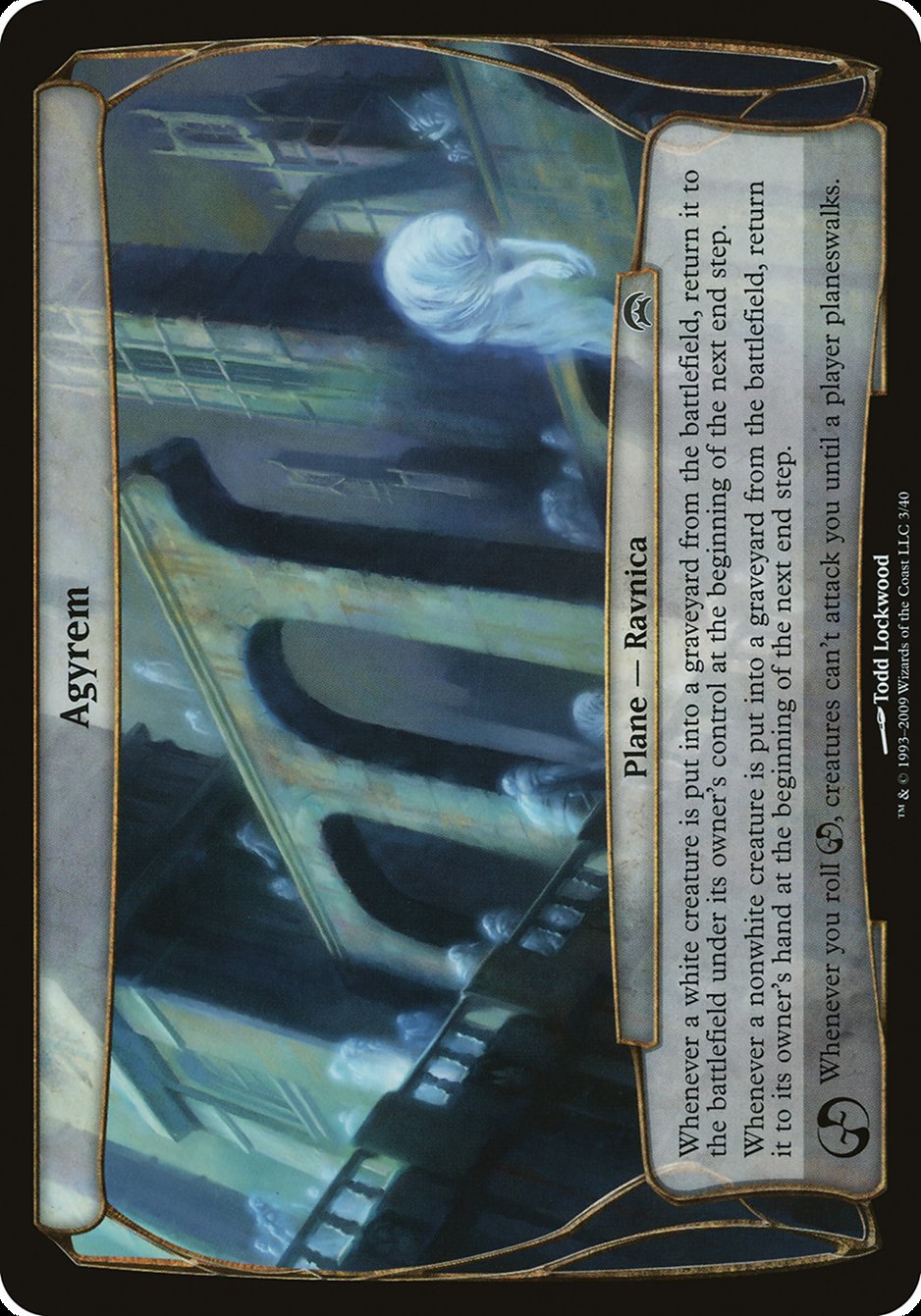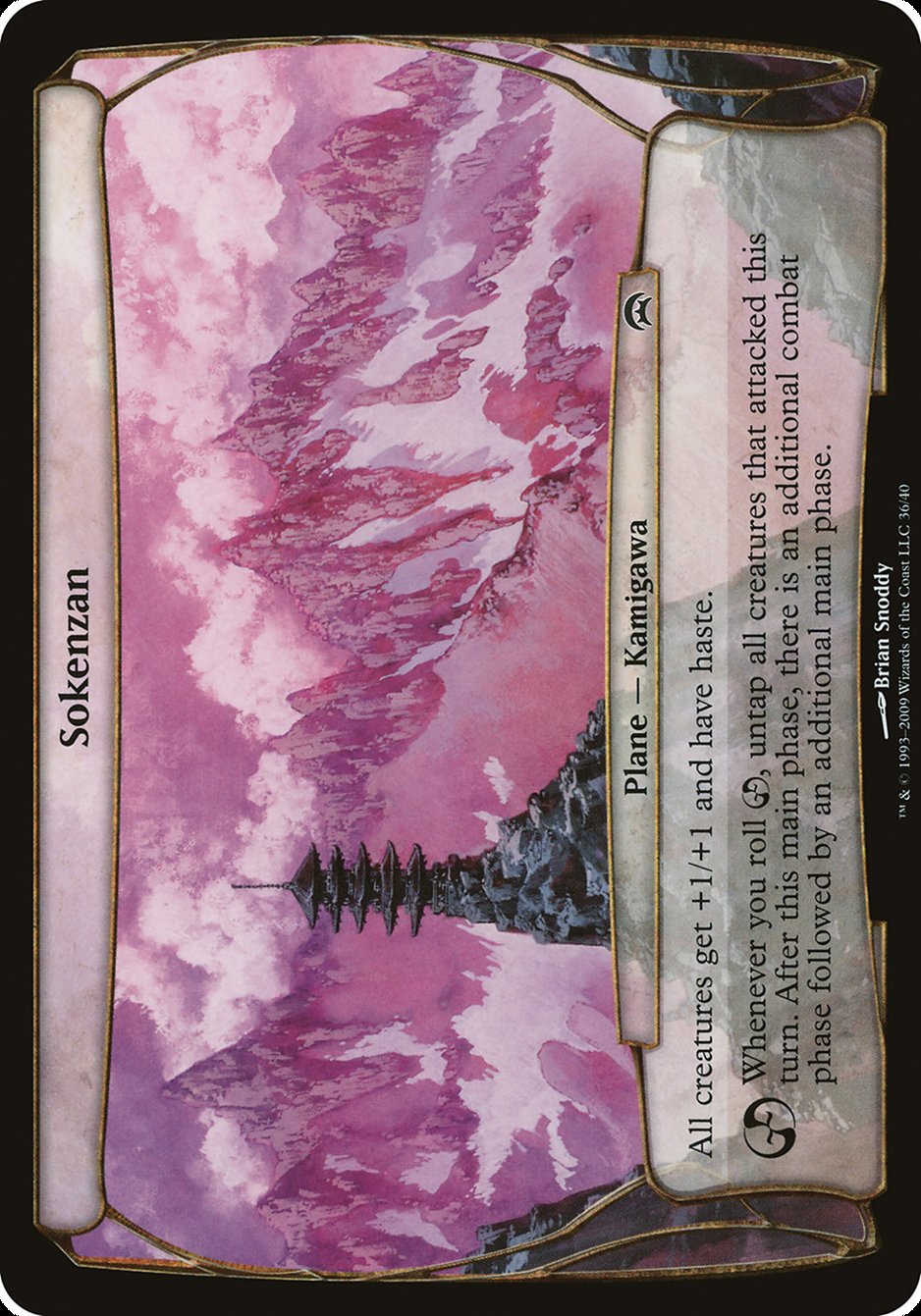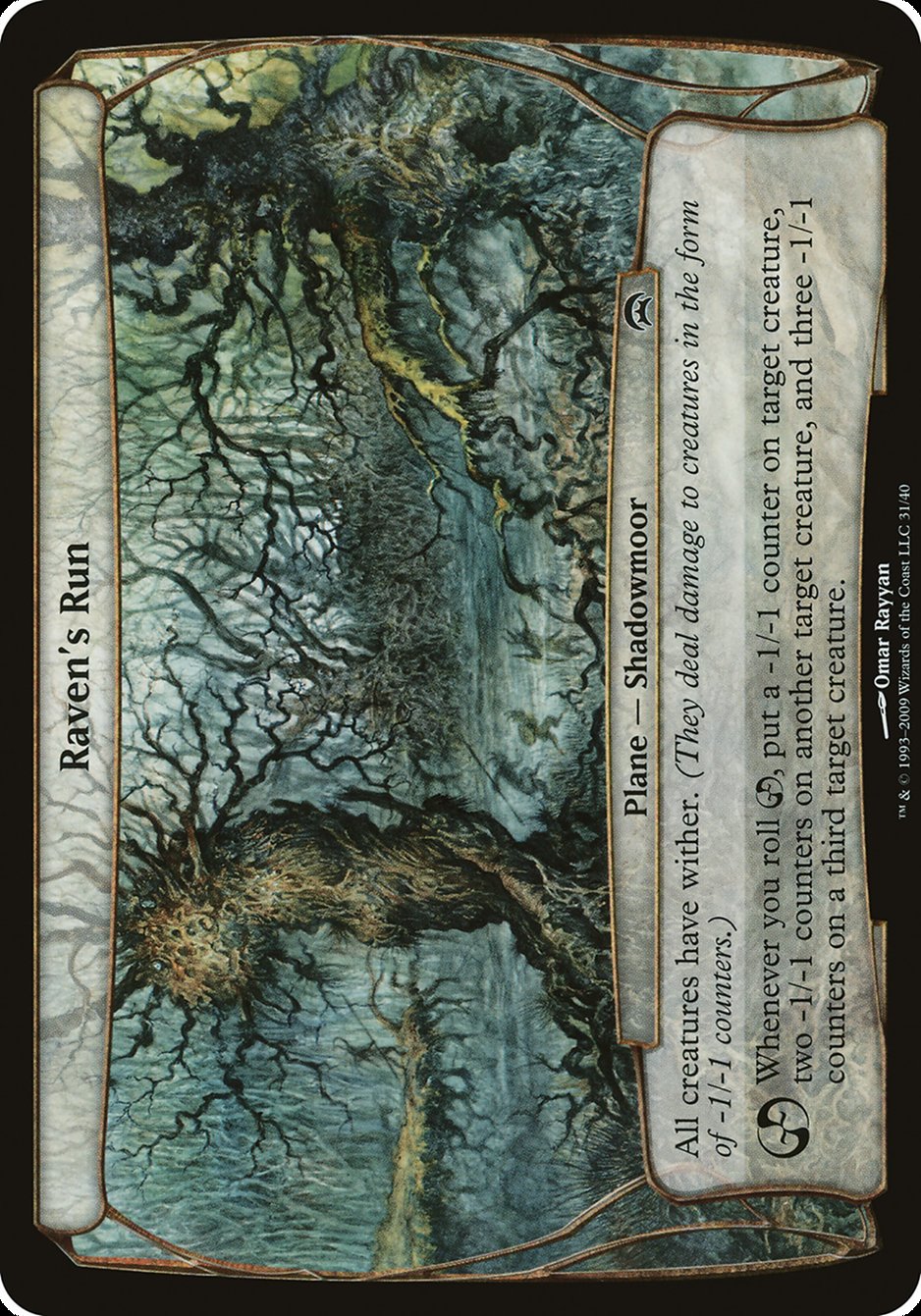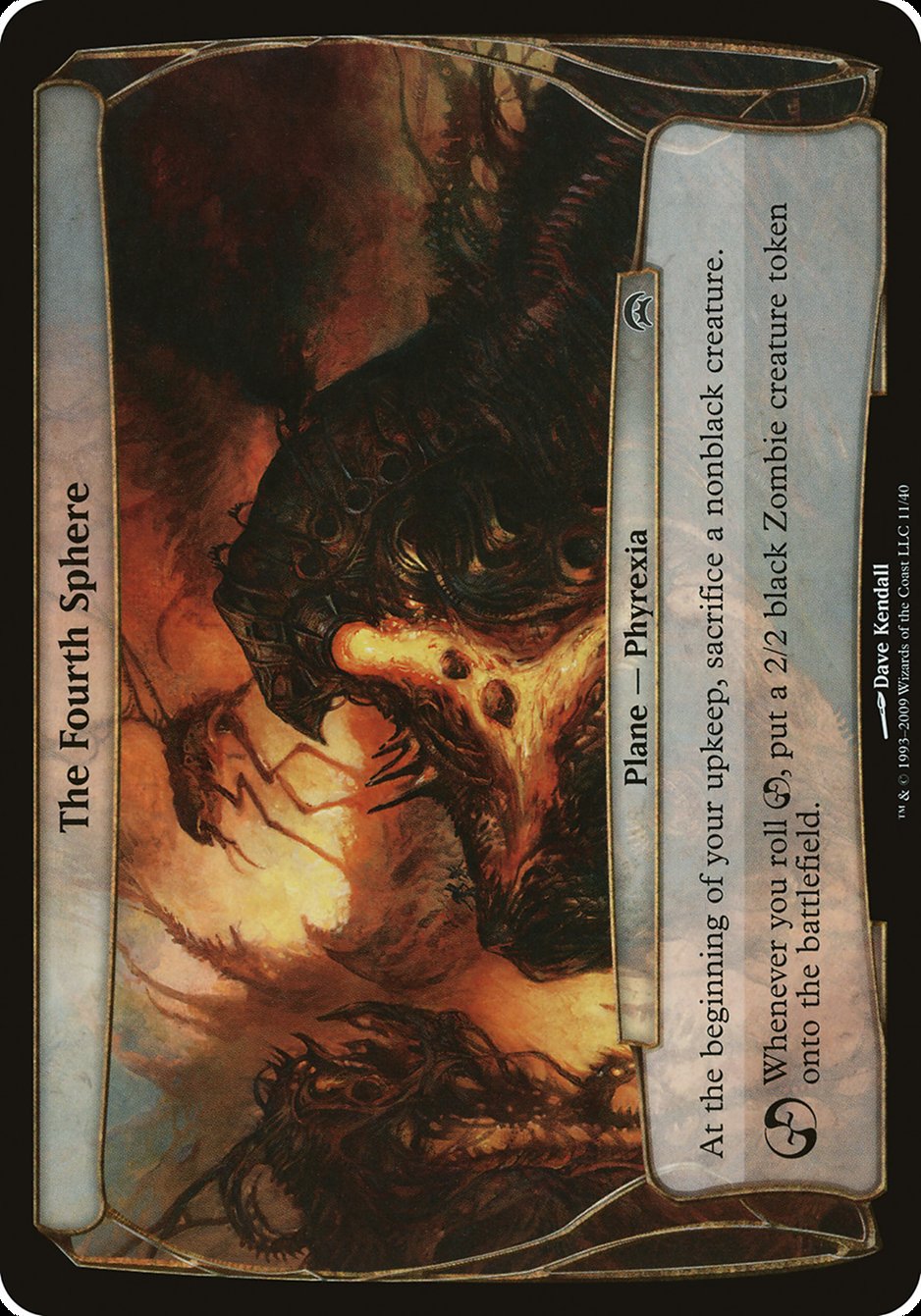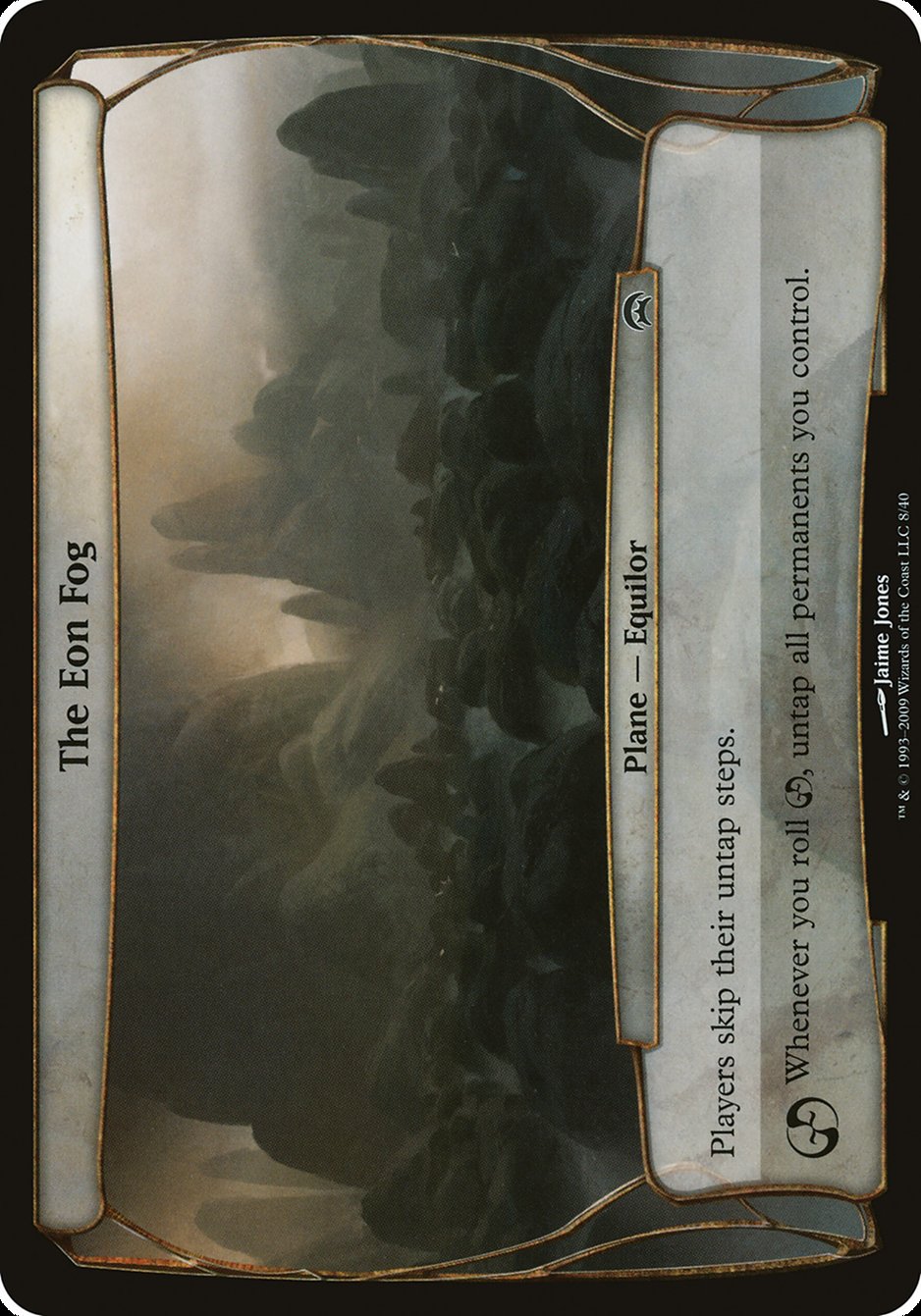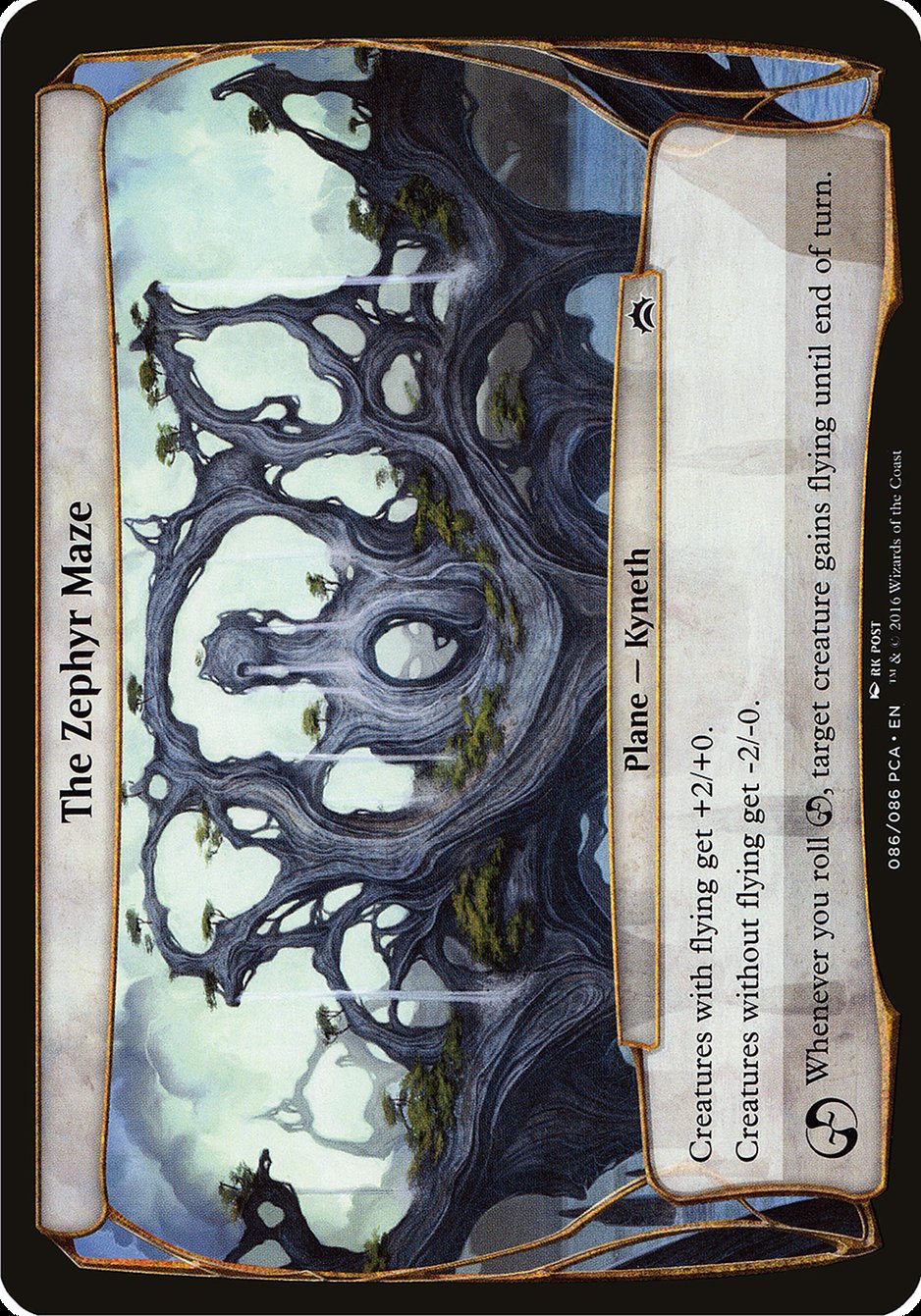El Remolino Carta MTG
| Colecciones da carta | Lanzado en 2 coleccionesVer todos |
| Rareza | Común |
| Tipo | Plano — Alara |
Texto de la carta
Cuando camines por los planos hacia El Remolino o al comienzo de tu mantenimiento, puedes mostrar la primera carta de tu biblioteca. Si es una carta de permanente, puedes ponerla en el campo de batalla. De lo contrario, pon esa carta en el fondo de tu biblioteca. Siempre que lances caos, regresa al campo de batalla la carta de permanente objetivo de tu cementerio.
Cartas Similares
En el vibrante paisaje de Magic: The Gathering, The Maelstrom es una carta que emana magia caótica y potencial. The Maelstrom invita comparaciones con Wheel of Fortune, ya que ambos te sumergen en un maremágnum de imprevisibilidad, ofreciendo nuevas opciones de mano y la posibilidad de jugadas que cambian el rumbo del juego. Mientras que Wheel of Fortune promueve la equidad rellenando la mano de cada jugador con siete cartas, The Maelstrom se basa en la asimetría, favoreciendo únicamente a su conjurador con la ventaja de lanzar hechizos en cascada.
Cartas de cascada como Maelstrom Nexus reflejan este mecanismo, permitiendo que cada uno de tus hechizos se sumerja en el flujo caótico de The Maelstrom y lance hechizos adicionales de forma gratuita. Esto refleja la esencia de The Maelstrom, pero Nexus extiende este beneficio a todos tus hechizos, ampliando tu control sobre la cascada. Mientras tanto, Yidris, Portador del Maelstrom también aprovecha la cascada, pero te exige conectarte con un oponente antes de desatar la tormenta de hechizos gratuitos, una condición que The Maelstrom no requiere.
Explorando estas similitudes, The Maelstrom destaca en el multiverso de MTG. No es solo una carta, es un espectáculo de azar y estrategia, combinando la imprevisibilidad del juego con la habilidad de aprovechar el caos a tu favor.
Cartas similares a El Remolino por color, tipo y coste de maná
Aspectos positivos de la carta
Ventaja de cartas: La carta El Maelstrom es conocida por su capacidad de cascada, que no solo lanza el hechizo inicial, sino que potencialmente desencadena hechizos adicionales sin costo adicional. Este poderoso mecanismo puede cambiar rápidamente el curso del juego, ofreciendo una ventaja de cartas significativa, ya que los jugadores obtienen efectivamente dos o más hechizos por el precio de uno. Con este mecanismo, la carta se convierte en un elemento básico en mazos que buscan superar al oponente en recursos.
Aceleración de recursos: Muchas versiones de El Maelstrom facilitan una aceleración rápida de recursos. Cuando se activa el efecto de cascada, puede revelar potencialmente cartas de alto impacto más temprano de lo que normalmente las lanzarías. Esto significa que lo que podría haberse jugado en múltiples turnos ahora podría estar en juego mucho antes, acelerando la estrategia del mazo y abrumando a los oponentes con tu estado emergente del tablero antes de lo esperado.
Velocidad instantánea: Si El Maelstrom se puede utilizar a velocidad instantánea, abre un mundo de profundidad estratégica. La capacidad de lanzar durante el turno de un oponente, o en respuesta a una acción, permite a los jugadores retener mana para contrarrestar o jugar otros hechizos y puede crear situaciones ventajosas que son imprevisibles para un oponente. El factor sorpresa y la flexibilidad de la velocidad instantánea convierten a El Maelstrom en una herramienta formidable en manos de un jugador habilidoso.
Aspectos negativos de la carta
Requisito de descarte: A menudo, acceder a los poderes caóticos de El Maelstrom tiene un costo, que incluye la necesidad de descartar otras cartas de tu mano. Esto puede retrasarte, especialmente si tu estrategia se basa en mantener un puño lleno de hechizos y amenazas para ejecutar tu plan de juego de manera efectiva.
Costo de maná específico: Uno de los obstáculos inmediatos al incorporar El Maelstrom en tu mazo es su requisito de maná específico. La carta exige un compromiso de colores diverso, lo que puede ser un desafío en la construcción del mazo, limitando su inclusión a mazos que puedan generar de manera confiable múltiples colores de maná.
Costo de maná comparativamente alto: Además de sus exigentes requisitos de color, El Maelstrom también tiene un alto costo de maná. Esto puede ralentizar tu ritmo, y en el entorno rápido del juego, podrías descubrir que para cuando puedas lanzarlo, tus oponentes ya pueden haber establecido una presencia dominante en el campo de batalla o haber configurado sus defensas.
Razones para incluir El Maelstrom en tu colección
Versatilidad: La carta El Maelstrom es una adición dinámica a varios estrategias debido a su capacidad para manipular las cartas superiores de la biblioteca de un jugador y potencialmente jugarlas de forma gratuita. Puede adaptarse a diversas construcciones, mejorando su eficacia.
Potencial de combo: Con El Maelstrom, los jugadores pueden orquestar poderosas combinaciones al caer en cascada en múltiples hechizos, avanzando significativamente en su presencia en el tablero y creando reacciones en cadena que pueden cambiar el curso del juego.
Relevancia en el meta: En un meta que cambia constantemente y donde los jugadores buscan una ventaja, El Maelstrom sigue siendo relevante por su capacidad para superar y maniobrar estrategias más predecibles, y combatir efectivamente varios mazos oponentes.
Cómo vencer
El Maelstrom es una carta de MTG que encarna el caos y efectos impredecibles, dejando a menudo a los oponentes buscando respuestas. Para navegar por el remolino de cambios que esta carta trae al campo de batalla, la estrategia y la previsión son clave. Una táctica eficaz para superar su influencia es desplegar medidas de control consistentes, como contrarrestar hechizos o habilidades que limiten el lanzamiento de hechizos, lo que ayuda a mantener un estado de juego estable contra la imprevisibilidad que promueve El Maelstrom.
Una herramienta poderosa contra estrategias caóticas es la manipulación del cementerio. Al usar cartas que eliminen o exilien cartas del cementerio, los jugadores pueden socavar el potencial de El Maelstrom para reciclar o aprovechar diversos efectos. Además, medidas proactivas, como una agresión rápida para presionar los totales de vida o hechizos disruptivos dirigidos a la interrupción de la mano, pueden desviar el juego lejos de las condiciones óptimas de El Maelstrom. La contención y la represión, en armonía con un enfoque ofensivo sólido, demuestran ser los pilares para sofocar la tormenta que El Maelstrom es capaz de conjurar.
Por lo tanto, contrarrestar la naturaleza errática de El Maelstrom es bastante tangible con la composición adecuada del mazo y un estilo de juego disciplinado. Centrarse en el control y la interrupción conduce a la victoria contra las fuerzas volátiles del remolino y solidifica la idea de que incluso las cartas más formidables pueden ser superadas con una estrategia cuidadosa y tácticas astutas.
Donde comprar
Si estás buscando comprar una carta MTG El Remolino de un coleccione específico como Planechase Planes and Planechase Anthology Planes, existen varias opciones confiables que debes considerar. Una de las fuentes principales es tu tienda de juegos local, donde a menudo puedes encontrar paquetes de refuerzo, cartas individuales y mazos preconstruidos de colecciones actuales y pasadas. A menudo ofrecen el beneficio adicional de una comunidad donde puedes intercambiar con otros jugadores.
Para un inventario más amplio, particularmente de colecciones más antiguos, mercados en línea como TCGPlayer, Card Kingdom y Card Market ofrecen amplias selecciones y te permiten buscar cartas de colecciones específicos. Las plataformas de comercio electrónico más grandes como eBay y Amazon también tienen listados de varios vendedores, lo que puede ser un buen lugar para buscar productos sellados y hallazgos raros.
Además, el sitio oficial de Magic suele tener un localizador de tiendas y listas de minoristas para encontrar Wizards of the Productos con licencia costera. Recuerde comprobar la autenticidad y el estado de las cartas al comprarlas, especialmente a vendedores individuales en mercados más grandes.
A continuación se muestra una lista de algunos sitios web de tiendas donde puede comprar las El Remolino y otras cartas MTG:
 COMPRAR
COMPRAR BurnMana es un socio oficial de TCGPlayer
- eBay
- Card Kingdom
- Card Market
- Star City Games
- CoolStuffInc
- MTG Mint Card
- Hareruya
- Troll and Toad
- ABU Games
- Card Hoarder Magic Online
- MTGO Traders Magic Online
Ver productos MTG
Impresiones
La carta El Remolino Magic the Gathering se lanzó en 2 colecciones diferentes entre 2009-09-04 y 2018-12-25. Ilustrado por James Paick.
| # | Liberado | Nombre | Código | Símbolo | Número | Marco | Disposición | Borde | Artista |
|---|---|---|---|---|---|---|---|---|---|
| 1 | 2009-09-04 | Planechase Planes | OHOP | 23 | 2003 | Planar | Negra | James Paick | |
| 2 | 2018-12-25 | Planechase Anthology Planes | OPCA | 49 | 2015 | Planar | Negra | James Paick |
Reglas e información
La guía de referencia para las reglas de las cartas El Remolino de Magic: The Gathering proporciona las reglas oficiales, las erratas emitidas, así como un registro de todas las modificaciones funcionales que se han producido.
| Fecha | Texto |
|---|---|
| 01/10/2009 | Una carta de plano boca arriba que se voltea boca abajo se convierte en un nuevo objeto sin relación con su existencia anterior. En particular, pierde todos los contadores que pueda haber tenido. |
| 01/10/2009 | Un carta permanente es una carta de artefacto, criatura, encantamiento, tierra o planeswalker. |
| 01/10/2009 | Una carta de plano se trata como si su caja de texto incluyera "Cuando lances {PW}, pon esta carta en la parte inferior del mazo de plano de su propietario boca abajo, luego mueve la carta superior de tu mazo de plano fuera de ese mazo de plano y dale la vuelta boca arriba". Esto se llama la "habilidad de caminar por planos". |
| 01/10/2009 | A medida que se resuelve la primera habilidad de El Maelstrom, eliges si revelar o no la primera carta de tu biblioteca. Si la revelas y es una carta de permanente, tienes dos opciones: Ponerla en el campo de batalla o ponerla en la parte inferior de tu biblioteca. No puede quedarse en la parte superior de tu biblioteca. Por otro lado, si la revelas y es una carta de instantáneo o conjuro, debe colocarse en la parte inferior de tu biblioteca. No hay forma de dejar una carta revelada de esta manera en la parte superior de tu biblioteca. |
| 01/10/2009 | Si una habilidad de un plano se refiere a "you," se está refiriendo a quien sea el controlador del plano en ese momento, no al jugador que comenzó el juego con esa carta de plano en su mazo. Muchas habilidades de las cartas de plano afectan a todos los jugadores, mientras que muchas otras afectan solo al controlador del plano, así que lee cada habilidad detenidamente. |
| 01/10/2009 | Si revelas una carta permanente que no puede entrar al campo de batalla (porque es un Aura y no hay nada que pueda encantar, por ejemplo), entonces debes ponerla en la parte inferior de tu biblioteca. |
| 01/10/2009 | El controlador de una carta de plano boca arriba es el jugador designado como el "controlador de plano". Normalmente, el controlador de plano es el jugador activo. Sin embargo, si el controlador de plano actual abandonara el juego, en su lugar el siguiente jugador en el orden de turno que no fuera a abandonar el juego se convierte en el controlador de plano, luego el antiguo controlador de plano abandona el juego. El nuevo controlador de plano retiene esa designación hasta que abandone el juego o un jugador diferente se convierta en el jugador activo, lo que ocurra primero. |


